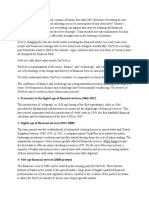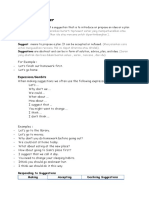0% found this document useful (0 votes)
47 views38 pagesModule - I
The document provides an overview of the evolution of fintech, highlighting its historical phases from Fintech 1.0 to the current Fintech 4.0, which focuses on disruptive technologies and the integration of digital banking. It discusses the growth drivers of fintech, including increased mobile usage, the rise of digital payments, and the importance of APIs and capital availability. Additionally, it emphasizes the need for regulatory frameworks to balance innovation with market integrity and explores the significance of wealthtech companies in enhancing financial services for individual investors.
Uploaded by
shahniku78Copyright
© © All Rights Reserved
We take content rights seriously. If you suspect this is your content, claim it here.
Available Formats
Download as PDF, TXT or read online on Scribd
0% found this document useful (0 votes)
47 views38 pagesModule - I
The document provides an overview of the evolution of fintech, highlighting its historical phases from Fintech 1.0 to the current Fintech 4.0, which focuses on disruptive technologies and the integration of digital banking. It discusses the growth drivers of fintech, including increased mobile usage, the rise of digital payments, and the importance of APIs and capital availability. Additionally, it emphasizes the need for regulatory frameworks to balance innovation with market integrity and explores the significance of wealthtech companies in enhancing financial services for individual investors.
Uploaded by
shahniku78Copyright
© © All Rights Reserved
We take content rights seriously. If you suspect this is your content, claim it here.
Available Formats
Download as PDF, TXT or read online on Scribd
/ 38






























































































